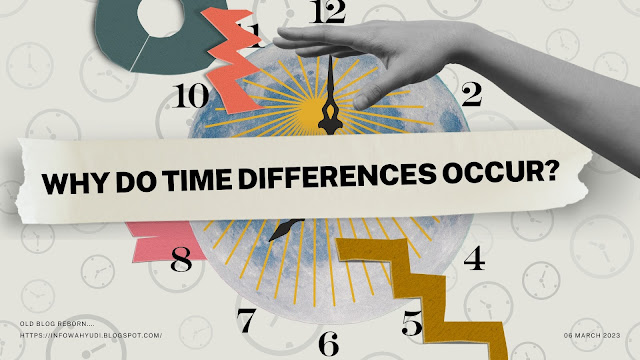Why Do Time Differences Occur?
 |
| Why Do Time Differences Occur? |
Have you ever wondered why it’s a different time in New York than it is in London, or why your friend in Australia is already starting their day when you’re getting ready for bed? The answer lies in the concept of time zones.
Time differences between time zones are simple to work out due to the Universal Time Coordinated (UTC). Standard times are shown as positive or negative deviations of UTC, that’s why time differences are calculated by determining UTC and calculating each time zone from there.
UTC is the primary time standard by which the world regulates clocks and time. It is one of several closely related successors to Greenwich Mean Time (GMT). For most purposes, UTC is considered interchangeable with GMT, but GMT is no longer precisely defined by the scientific community.
Time zones are regions of the Earth that have adopted the same standard time. This standard time is usually the mean solar time at a specific longitude, which is then adjusted for political, economic, or social reasons. For example, the time zone for the east coast of the United States is based on the mean solar time at 75 degrees west longitude, which passes through Philadelphia.
The world is divided into 24 time zones, with each time zone generally 15 degrees of longitude wide. This means that for every 15 degrees of longitude you travel east or west, the local time changes by one hour. So, if you travel from New York to London, which is about 75 degrees of longitude, the time difference will be 5 hours.
Of course, not all time zones follow this neat division of the world into 15-degree-wide slices. Many countries have chosen to adjust their time zones for various reasons, such as to align with their neighbors or to avoid splitting their territory into multiple time zones. This can result in time zones that are wider or narrower than 15 degrees, or that are offset from UTC by a non-integer number of hours.
In addition to time zones, many places also observe Daylight Saving Time (DST), which can further complicate the calculation of time differences. DST is the practice of setting the clock forward by one hour during the longer days of summer in order to make better use of natural daylight. This means that the time difference between two locations can change depending on whether or not they are both observing DST.
I hope this article has helped you to better understand why time differences occur and how they are calculated. If you’d like to learn more, you can check out some of the sources I used to write this article, such as {1} or {2}. Is there anything else you’d like to know about this topic?



Comments
Post a Comment